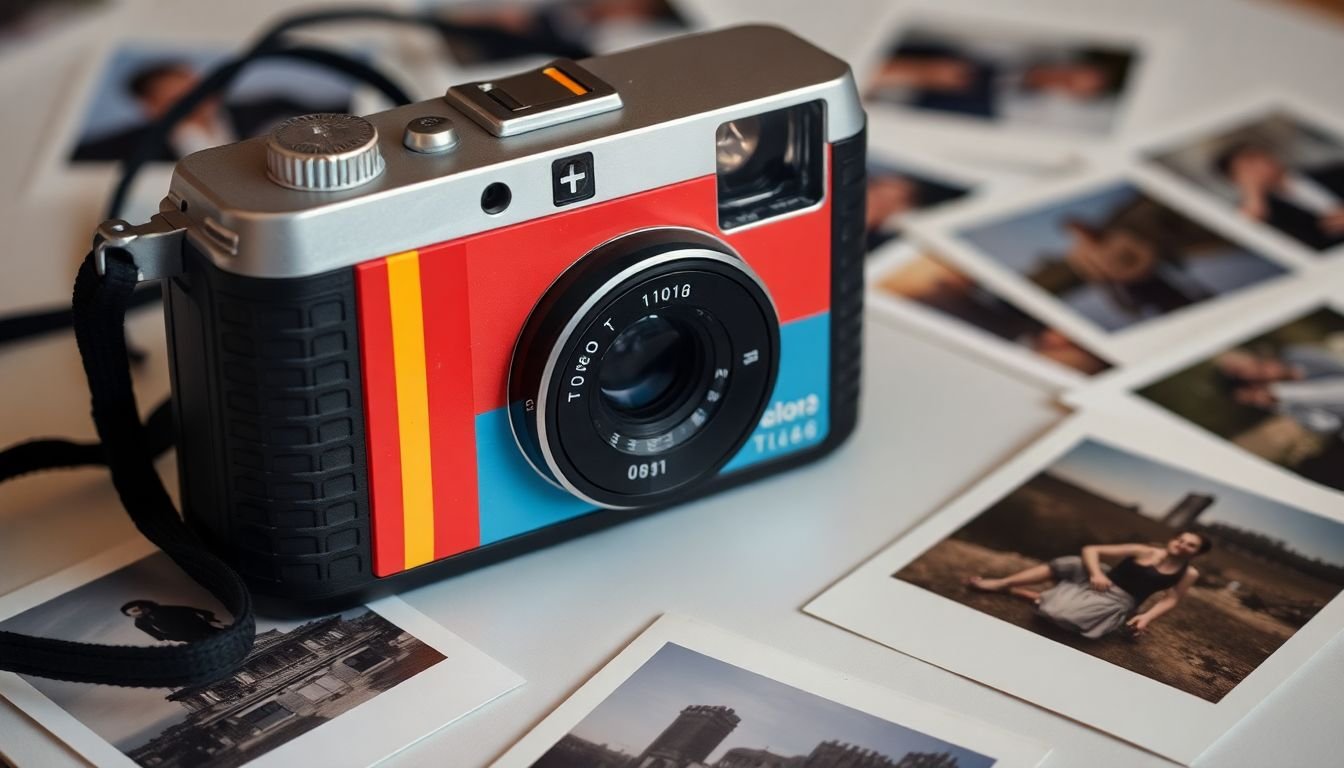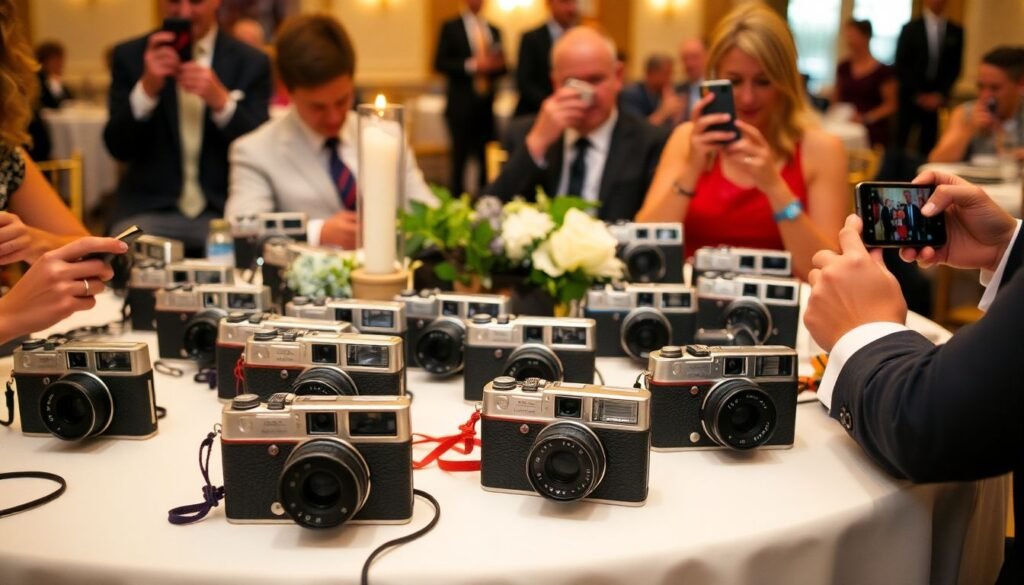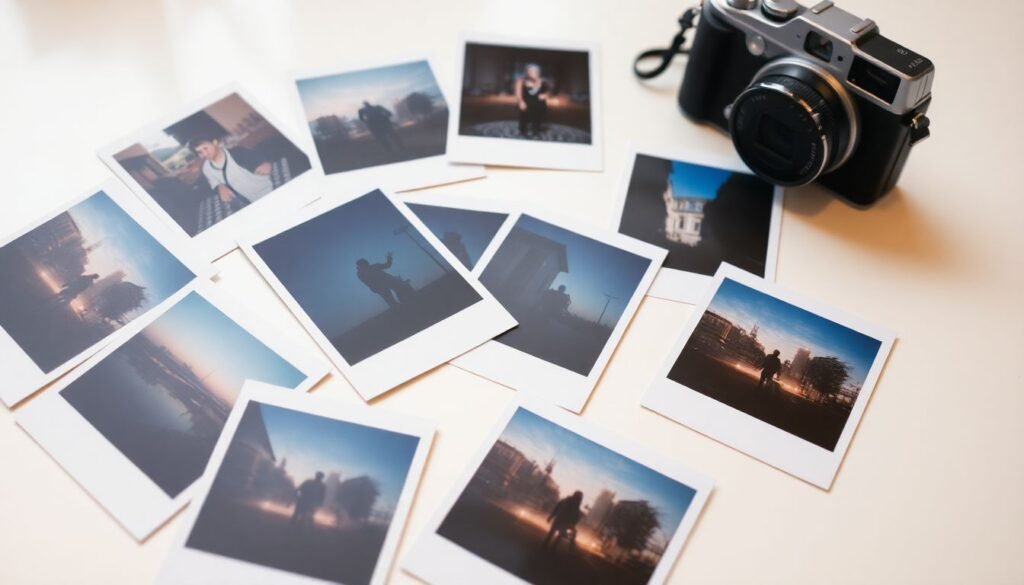Physical Address
304 North Cardinal St.
Dorchester Center, MA 02124
Physical Address
304 North Cardinal St.
Dorchester Center, MA 02124

Disposable cameras, once a relic of the 90s, are making a strong comeback in 2024. While many of us have smartphones that can take thousands of high-resolution photos at the click of a button, there’s something uniquely charming about snapping a picture with an old-school, one-time-use camera.
Whether it’s the raw, unfiltered look of the photos, or the nostalgic joy of waiting to see how your pictures turn out, disposable cameras still hold a special place in our hearts. But what’s the true cost of these quirky devices today?
In this article, we’ll explore the financial, environmental, and time costs of using disposable cameras in 2024. Are they worth the investment? Let’s dive in.
A disposable camera is a simple, single-use camera that comes pre-loaded with film. Once you’ve taken all the photos (usually around 27 shots), you send the camera to a lab for development.
Originally created for convenience, these cameras were a cheap way for people to capture memories without needing to buy a more expensive camera or deal with complicated settings.
Despite their simplicity, disposable cameras have earned a cult following over the years, especially for those looking to escape the digital world, if only for a while.

In 2024, one of the biggest reasons for disposable cameras’ continued popularity is nostalgia. Much like vinyl records or Polaroid cameras, disposable cameras evoke a sense of simpler times. For many, they bring back memories of family vacations or special events, where waiting for the pictures to develop was part of the fun.
Younger generations, especially Gen Z, have latched onto this retro trend, seeing it as a way to escape the hyper-digital world they’ve grown up in. The grainy quality of film photos, the suspense of not knowing how the picture turned out, and the physical photo prints all contribute to the appeal.
Disposable cameras are not just for hipsters or those trying to relive the 90s. They’ve become a staple at weddings, parties, and music festivals.
Guests can grab a camera and capture candid moments, adding an authentic and imperfect touch that digital photos often lack.
In 2024, social media platforms like Instagram and TikTok are flooded with film-style photos, further pushing the trend. Influencers are embracing the raw, vintage aesthetic, driving more interest in these cameras.

As fun as disposable cameras are, there’s no denying their environmental impact. Most are made from plastic, which often ends up in landfills. The chemical processes used to develop film also raise concerns about toxic waste and resource consumption.
Since disposable cameras are designed to be thrown away after one use, they contribute to the global single-use plastic problem. Despite efforts to recycle them, many end up as waste because recycling programs for these devices are not widely available or practical.
In 2024, the cost of a disposable camera ranges from £15 to £25, depending on the brand and where you buy it. That might not seem too bad at first, but this is only part of the expense.
Once you’ve taken all your photos, you’ll need to develop them, which can cost anywhere from £10 to £20 for a single roll of film. So, a disposable camera’s total cost per use can easily exceed £40.
Compare this to the virtually free experience of taking endless photos with a smartphone, and it’s clear that disposable cameras can be a costly hobby.
Add to that the limited number of photos you can take (usually between 24-27 shots per camera), and you might find yourself spending a lot more than expected.

Beyond the upfront cost of the camera and development, there are other hidden costs to using disposable cameras. For one, you only get a small number of photos, meaning you might need to buy multiple cameras for a big event.
Plus, there’s the time factor. Developing film isn’t instant. Depending on where you live, it could take a few days or even weeks to get your pictures back.
In contrast, with digital cameras or smartphones, you can instantly delete bad shots and take unlimited photos without needing to think about how much each one costs.
If you love the look and feel of film photography but don’t like the waste or recurring cost, reusable film cameras might be a better option. These cameras work like disposable ones, but instead of throwing them away after one use, you can reload them with film.
While a reusable film camera can cost more upfront, it’s a more sustainable option and can save you money in the long run. With many photographers gravitating toward vintage and refurbished models, reusable cameras offer an eco-friendlier and more cost-effective solution.

One of the ongoing expenses of using disposable cameras is film development. In 2024, prices for developing a roll of film can vary widely, depending on whether you go to a local photo lab or a national chain.
You might pay as little as £10 or as much as £20 per roll, with additional charges for photo prints or digital scans.
If you’re serious about film photography, you could also invest in a home development kit. While this requires more time and effort, it can significantly reduce your long-term costs.
Despite their costs, disposable cameras remain popular at weddings and events. There’s something special about handing guests a camera and letting them capture the day from their unique perspective.
These candid moments can often feel more authentic than the posed, digital photos taken by professionals.
They’ve also become a creative tool. Some couples leave a disposable camera at each table during the reception, encouraging guests to snap pictures throughout the night. The unpredictability and anticipation of seeing the developed photos weeks later adds to the fun.

In recent years, global supply chain disruptions have affected many products, including disposable cameras.
Material shortages, particularly for the plastics and chemicals used in these cameras, have caused price increases. As a result, disposable cameras in 2024 may be pricier than in previous years.
While traditional disposable cameras have a hefty environmental impact, some companies are working on eco-friendly alternatives.
These new models aim to be biodegradable or made from recyclable materials, reducing their environmental footprint. However, they’re still not widely available and tend to be more expensive.

Pros:
Cons:
So, is using a disposable camera in 2024 worth it? It depends on what you’re looking for. If you want a fun, retro experience, and don’t mind the costs or environmental impact, disposable cameras can offer a refreshing break from digital photography.
However, for those seeking a more cost-effective, sustainable option, reusable film cameras or simply using your smartphone might be the better route.

Disposable cameras are a blast from the past, offering a unique photographic experience in 2024. However, their true cost goes beyond the initial price tag. With environmental concerns and rising costs for film development, it’s essential to weigh the pros and cons before diving into the world of disposable photography. Still, for special occasions and those craving nostalgia, these cameras can be a delightful way to capture memories.
Are disposable cameras becoming more expensive?
Yes, due to supply chain issues and material shortages, the price of disposable cameras has risen in 2024.
Can disposable cameras be recycled?
Some parts can be recycled, but many end up in landfills due to the limited availability of recycling programs.
How many photos can you take with a disposable camera?
Most disposable cameras offer between 24 to 27 shots per roll.
Are there better alternatives to disposable cameras?
Yes, reusable film cameras offer a more sustainable and cost-effective option for film enthusiasts.
Why do people still use disposable cameras in 2024?
Many people enjoy the nostalgic feel, the unique photo quality, and the simplicity of disposable cameras, especially for events and special occasions.